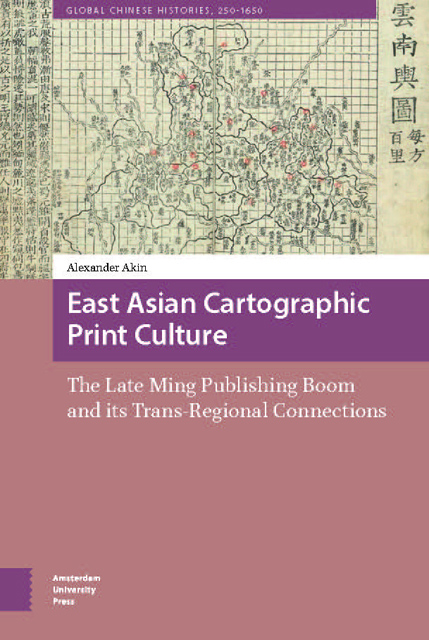 East Asian Cartographic Print Culture
East Asian Cartographic Print Culture Published online by Cambridge University Press: 12 January 2023
Abstract
This chapter takes a Ming-centric approach to the Jesuit cartographic project under Matteo Ricci and his immediate successors, discussing reactions to the missionaries’ maps and their citation in works published by Ming scholars. Of all the empires in which the Jesuits set foot, the Ming was the first in which they encountered an already highly developed cartographic culture, leading to an unusually prominent role for cartography in their proselytization. Examining the issues the Jesuits addressed through maps, as well as their methods of production, distribution, and influence, this chapter argues for an understanding of their publications as part of the late Ming publishing boom.
Keywords: late Ming, Jesuit missionaries, Matteo Ricci, Tushu bian, Sancai tuhui, Chen Zushou
We now turn to one of the few truly novel developments in late Ming cartography, the introduction of a fundamentally different worldview in the late sixteenth and early seventeenth century. In no region of the world other than East Asia did the Catholic missionaries of the Jesuit order make the introduction of translated European maps a tool of evangelism. That they did so in Ming society and in Japan, and indirectly in Chosŏn as well, is due to their serendipitous arrival at a time when cartographic materials were already proliferating in literate society. The Jesuits realized that a discussion was already going on about issues they could answer in a new way, and cartography emerged as a potential channel for opening conversations that they hoped could lead to their more central religious concerns. As the Jesuits became more familiar with their audience, the nature of existing publications already in circulation, and the types of works that would serve as gateways to their broader mission, this familiarity shaped the direction of their publishing activity under Matteo Ricci (Chinese: Li Madou 利瑪 竇) and his successors.
The Jesuits were active participants in the late Ming publishing boom; they introduced strikingly new material to an already burgeoning traffic in maps while still making use of the preexisting infrastructure of Ming publishing. Jesuit publications entered a churning stream of texts from which others could fish out material for recombination and reconstitution in their own books, in much the same way that earlier Ming works provided raw material for cutting and pasting into late Ming compendia.
To save this book to your Kindle, first ensure [email protected] is added to your Approved Personal Document E-mail List under your Personal Document Settings on the Manage Your Content and Devices page of your Amazon account. Then enter the ‘name’ part of your Kindle email address below. Find out more about saving to your Kindle.
Note you can select to save to either the @free.kindle.com or @kindle.com variations. ‘@free.kindle.com’ emails are free but can only be saved to your device when it is connected to wi-fi. ‘@kindle.com’ emails can be delivered even when you are not connected to wi-fi, but note that service fees apply.
Find out more about the Kindle Personal Document Service.
To save content items to your account, please confirm that you agree to abide by our usage policies. If this is the first time you use this feature, you will be asked to authorise Cambridge Core to connect with your account. Find out more about saving content to Dropbox.
To save content items to your account, please confirm that you agree to abide by our usage policies. If this is the first time you use this feature, you will be asked to authorise Cambridge Core to connect with your account. Find out more about saving content to Google Drive.